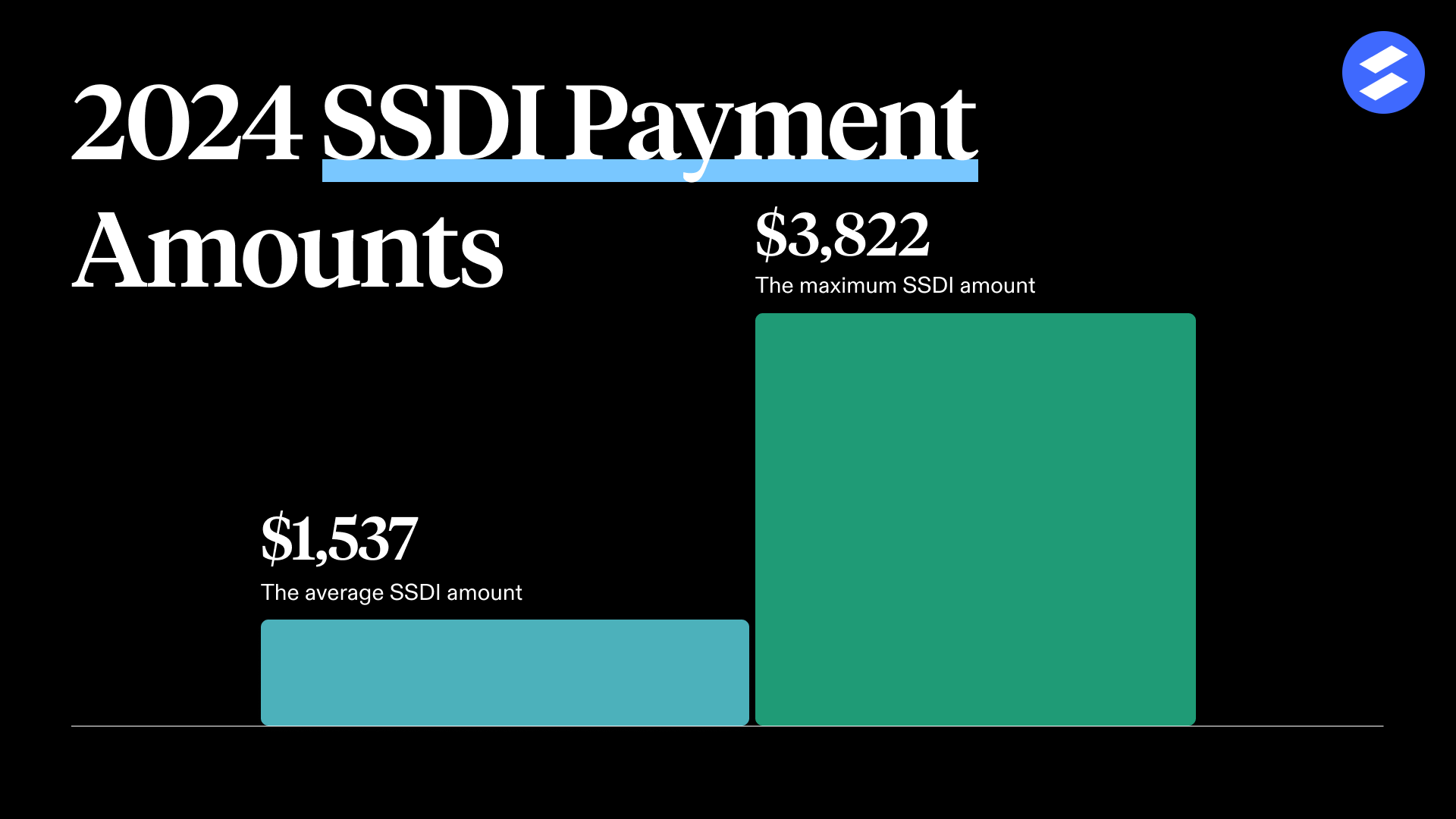Is Diabetes a Disability? How to Get Benefits for Diabetes

Atticus offers free, high-quality disability advice for Americans who can't work. Our team of Stanford and Harvard trained lawyers has a combined 15+ years of legal experience, and have helped over 10,000 Americans apply for disability benefits.
If diabetes and its complications prevent you from working, you can qualify for disability benefits. In 2021, 2.1% of workers received disability benefits for endocrine disorders such as diabetes.
To help you better understand whether your diabetes may qualify, we’ll go over how the Social Security Administration (SSA) defines diabetes, what criteria it looks for, and what you should do if you think you qualify for benefits.
Is diabetes a disability?
Yes, the Social Security Administration considers diabetes a disability as long as your condition prevents you from working. However, many people can manage their diabetes sufficiently enough to allow them to continue working.
If you can still work, the SSA may not consider your condition disabling. You may still be covered under the Americans with Disabilities Act, which protects people with disabilities from discrimination.
How the SSA defines diabetes
Both type 1 and type 2 diabetes are eligible for disability benefits as long as they meet the medical requirements. During the decision process, the SSA will also consider other health conditions resulting from your diabetes.
Types of diabetes
Diabetes is a pancreatic gland disorder that’s officially called diabetes mellitus. There are two common types.
Type 1 diabetes is an absolute deficiency of insulin production. Type 1 diabetes commonly begins in childhood and continues throughout adulthood, which means that treatment of type 1 diabetes requires lifelong daily insulin. You may also know this condition as juvenile diabetes or insulin-dependent diabetes mellitus (IDDM).
With type 2 diabetes, the body’s cells resist the effects of insulin, weakening your glucose absorption and metabolism. Treatment for type 2 diabetes generally requires lifestyle changes like increased exercise and a modified diet. You may need to take insulin in addition to other medications. In some cases, type 2 diabetes is also called adult-onset diabetes or non-insulin-dependent diabetes mellitus (NIDDM).
Diabetes symptoms
According to the National Institute of Diabetes and Digestive and Kidney Diseases, the symptoms of diabetes include:
Blurred vision
Fatigue
Increased hunger and thirst
Increased urination
Numbness and tingling in the hands and feet
Weight loss
Sores
Undiagnosed or unmanaged diabetes can lead to other conditions, such as:
Eye problems
Heart disease
Can you get disability for diabetes?
Yes, you can get disability benefits if your diabetes or its complications prevents you from working. If your diabetes leaves you unable to handle daily tasks or care for yourself on your own, you may also qualify.
The SSA lists diabetes under Section 9 of its Blue Book, along with other endocrine disorders.
Unfortunately, many people who have diabetes won’t qualify to receive disability benefits. If you experience complications but can still control your diabetes with medication or lifestyle changes, you won't qualify.
But if your diabetes is too severe for you to work, you're more likely to meet the medical requirements for Social Security Disability Insurance (SSDI) or Social Security Insurance (SSI).
Related: What other health conditions qualify for disability benefits?
How to qualify for disability with diabetes
When applying for disability benefits, your diabetes is more likely to qualify if you’re on insulin and you have A1C test results showing 10% or higher. Your chances of approval are highest if you can also show that your symptoms have persisted even though you’ve received treatment.
Your chances of getting approved also increase if you have any of the following complications caused by diabetes:
Diabetic ketoacidosis (DKA), especially if it requires hospital treatment
Cardiac arrhythmias
Intestinal necrosis
Cerebral edema and seizures
Hyperglycemia, especially if you experience long-term complications
Chronic hyperglycemia
Hypoglycemia
Diabetic nephropathy
Coronary artery disease
Mental health conditions that make it harder to treat your diabetes, such as depression or anxiety
Regardless of what symptoms or complications you experience, it’s important to work closely with your doctor so they can document your condition. The SSA will look for detailed medical records, and failing to show that you’ve been diagnosed and received treatment will hurt your case.
You may qualify if you answer “yes” to all or most of these questions
There’s no checklist that can guarantee your disability claim will be approved, but here are a few questions worth asking yourself before applying:
Am I insulin-dependent? Do I have trouble controlling my blood sugar?
Do I have A1C test results of 10% or higher?
Do I experience neuropathy?
Do I suffer from open wounds? Are they treatable? Do they continue to occur even with treatment?
Have I ever been hospitalized for ketoacidosis? How many times?
Have I developed other conditions alongside my diabetes, such as arthritis?
My diabetes meets the criteria for disability benefits. Now what?
If you believe that your diabetes will qualify, the next step is to apply for disability benefits. Getting approved for benefits can take months or years, so it’s important to submit your application as soon as possible.
If you’re unsure or want help deciding, take our 2-minute disability quiz.
If you qualify, we can also refer you to an experienced disability lawyer who will help fill out your application in a way that resonates with the SSA. Plus, you won’t have to pay the lawyer unless they win your case.
The types of disability benefits
There are two types of disability benefits available through the SSA: Social Security Disability Insurance and Supplemental Security Income.
SSDI eligibility is based on your work history, and you may qualify if you’ve worked and paid taxes for at least five of the past 10 years. SSI is an income-based program and may be an option if you don’t meet the SSDI work history requirements.
Both programs use the same application, so you can easily apply for SSDI and SSI at the same time.
How much is a disability check for diabetes?
The average monthly disability check for diabetes and other similar endocrine disorders is $1,318.54.
How much you get will depend on your work and income history. The maximum SSDI payment is $3,822 per month and the maximum SSI payment is $943 per month in 2024. Those maximum amounts for SSDI and SSI are set by law and are the same for every condition.

What if my diabetes doesn’t meet the criteria?
Most people who live with diabetes — even some with severe symptoms — can manage their condition enough that they can still work.
It’s an unfortunate truth that qualifying for Social Security disability is difficult. In fact, only about 20% of applicants win their claim on the initial application.
It is possible to apply for benefits even if you’re not sure you qualify, but your best option is to speak with an expert — a disability lawyer — about your situation. They’ll be able to advise you on whether your specific situation could make you eligible for benefits.
If your diabetes is severe and you need financial, legal, or other help as you try to manage your condition, there are certain state and federal resources for people with disabilities.
Other conditions that can qualify for disability:
Inflammatory bowel disease (IBD) | OCD (obsessive-compulsive disorder) |
Related resources:
Qualifying for Disability: Everything You Should Know
Is it Hard to Get Disability for Mental Illness? (Yes, But This Can Help)

Jackie Jakab
Lead Attorney
For Clients
For Lawyers
At the bottom of many websites, you'll find a small disclaimer: "We are not a law firm and are not qualified to give legal advice." If you see this, run the other way. These people can't help you: they're prohibited by law from giving meaningful advice, recommending specific lawyers, or even telling you whether you need a lawyer at all.
There’s no disclaimer here: Atticus is a law firm, and we are qualified to give legal advice. We can answer your most pressing questions, make clear recommendations, and search far and wide to find the right lawyer for you.
Two important things to note: If we give you legal advice, it will be through a lawyer on our staff communicating with you directly. (Don't make important decisions about your case based solely on this or any other website.) And if we take you on as a client, it will be through a document you sign. (No attorney-client relationship arises from using this site or calling us.)
- © 2025 Atticus Law, P.C.
Terms | Privacy | California Privacy | CHD Policy | Disclaimer | This website is lawyer advertising.